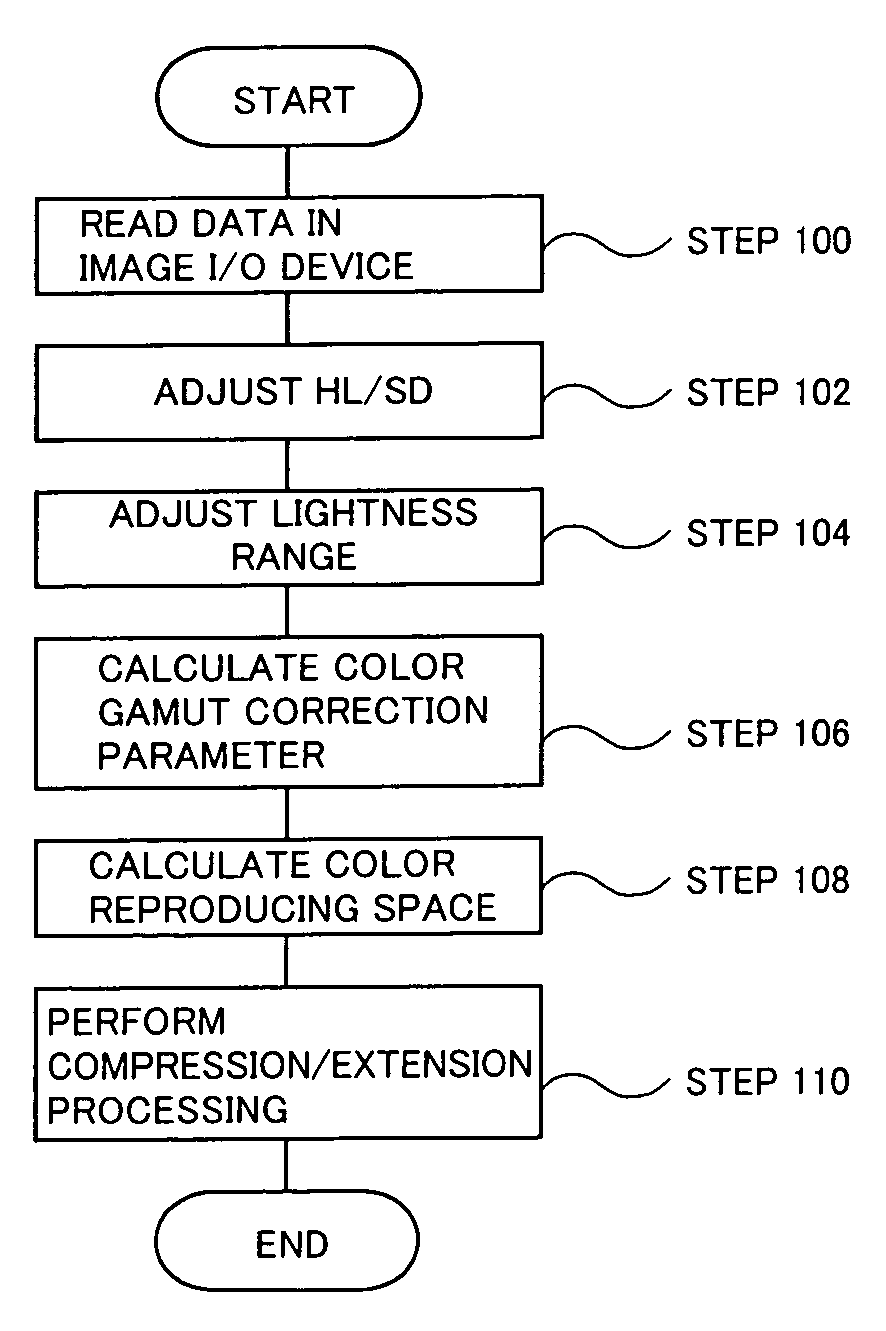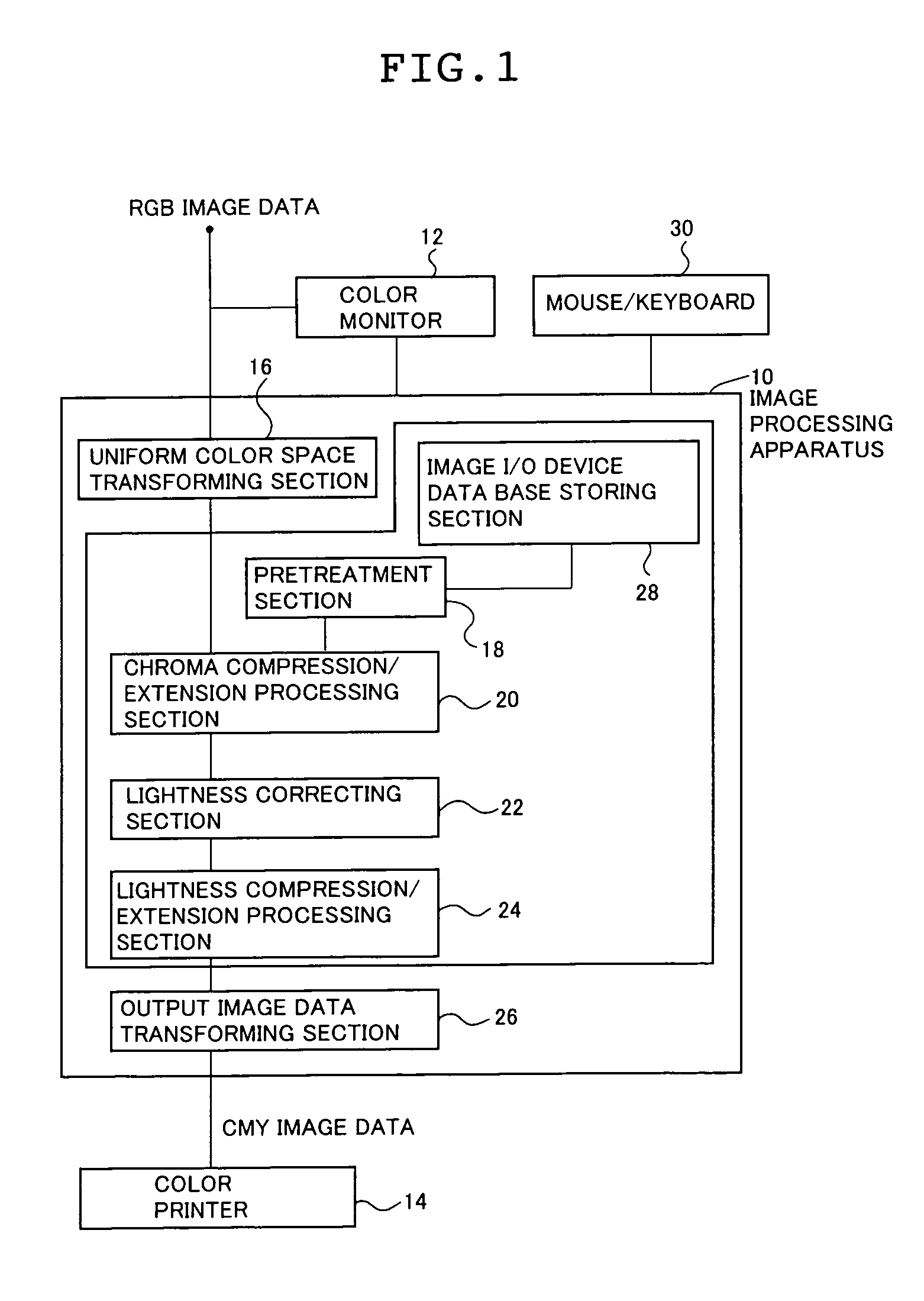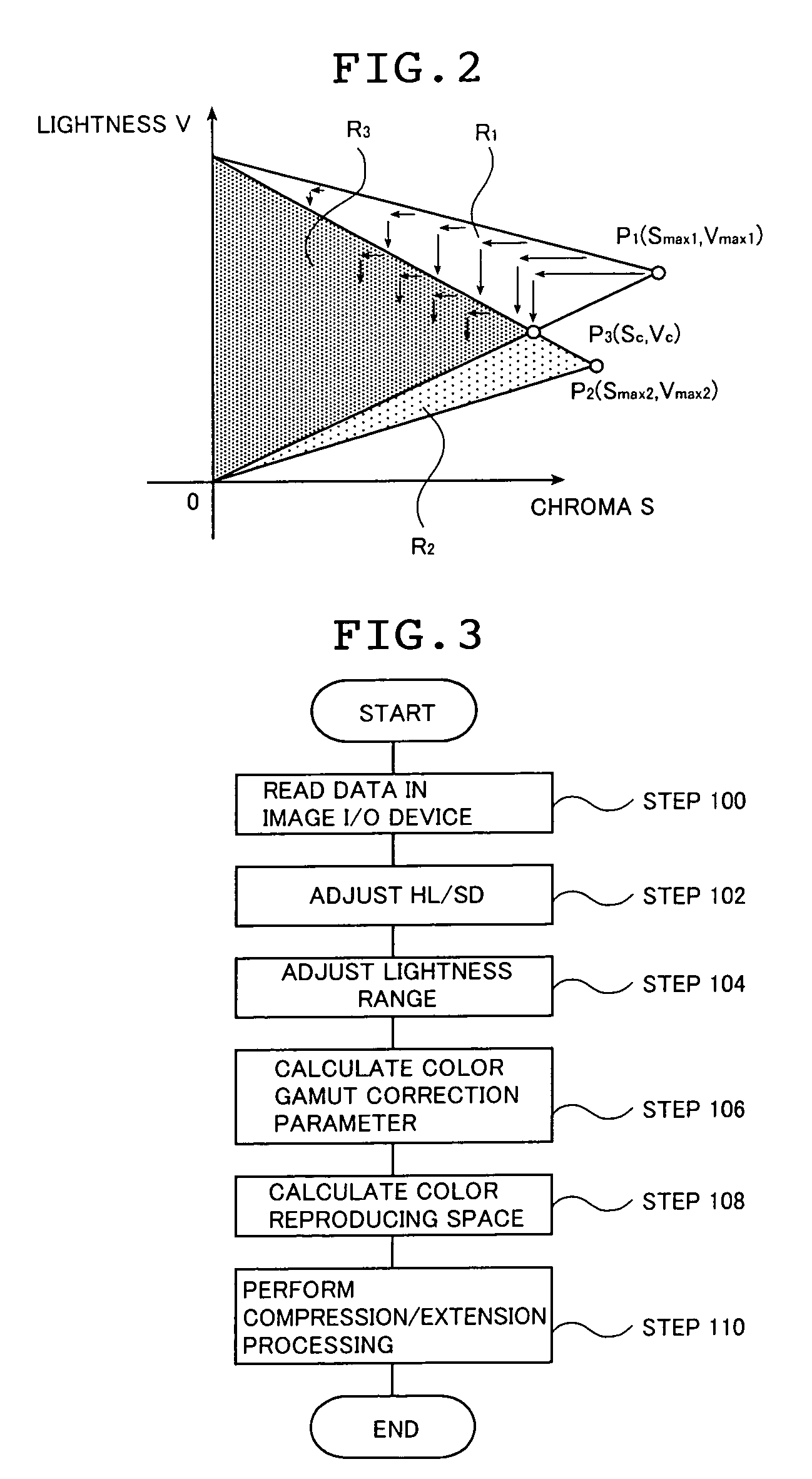Method of compressing/extending color reproducing space, color reproducing method and color reproducing apparatus
- Summary
- Abstract
- Description
- Claims
- Application Information
AI Technical Summary
Benefits of technology
Problems solved by technology
Method used
Image
Examples
Embodiment Construction
[0061]We will now describe more specifically a method of compressing / extending a color reproducing space according to a first embodiment of the present inventions a color reproducing method and a color reproducing apparatus according to a second and a third embodiments of the present invention respectively, with reference to the preferred embodiments shown in the accompanying drawings.
[0062]To begin with, the method of compressing / extending a color reproducing space according to the first embodiment of the present invention is described, based on the image processing apparatus implementing the method of compressing / extending the color reproducing space of the present invention, with reference to FIGS. 1 to 12.
[0063]FIG. 1 shows an image processing apparatus 10 implementing a method of compressing / extending a color reproducing space of the present invention. The image processing apparatus 10 is not only an image processing apparatus into which RGB image data that have been read with ...
PUM
 Login to View More
Login to View More Abstract
Description
Claims
Application Information
 Login to View More
Login to View More - Generate Ideas
- Intellectual Property
- Life Sciences
- Materials
- Tech Scout
- Unparalleled Data Quality
- Higher Quality Content
- 60% Fewer Hallucinations
Browse by: Latest US Patents, China's latest patents, Technical Efficacy Thesaurus, Application Domain, Technology Topic, Popular Technical Reports.
© 2025 PatSnap. All rights reserved.Legal|Privacy policy|Modern Slavery Act Transparency Statement|Sitemap|About US| Contact US: help@patsnap.com



